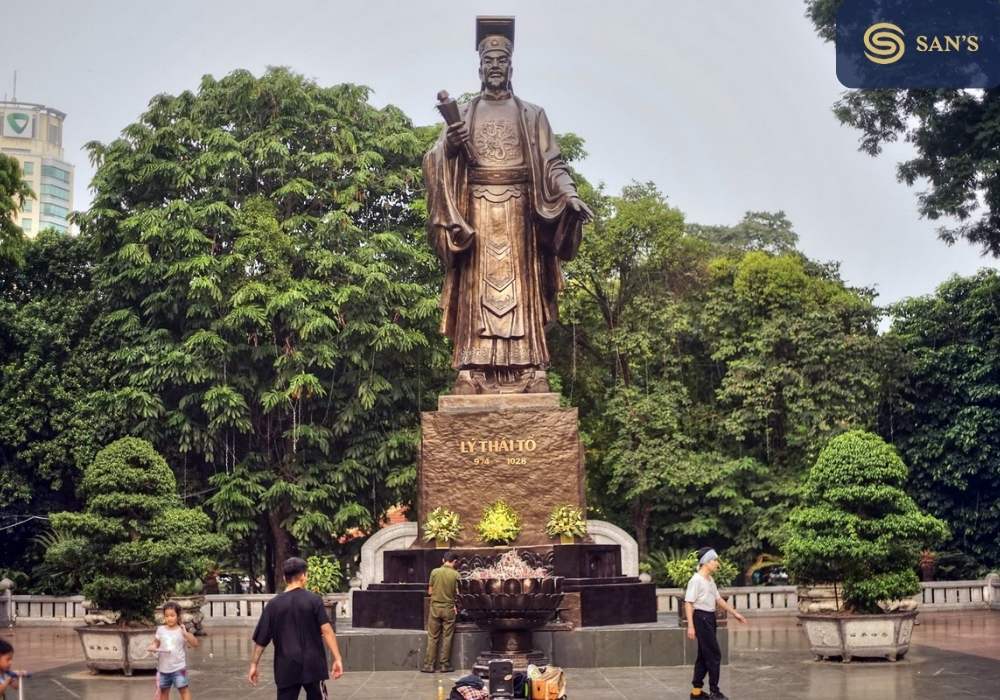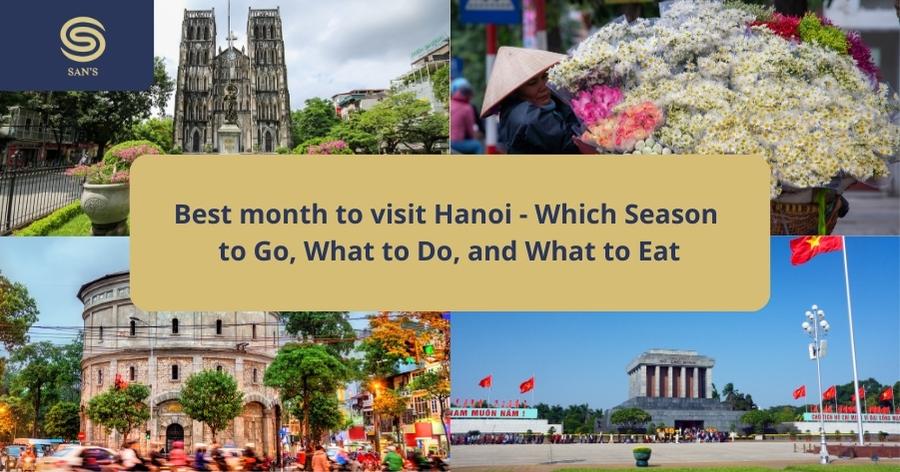As the sun casts its early rays upon the vibrant city of Hanoi, it reveals a mesmerizing dance between eras. Ancient temples stand tall beside gleaming skyscrapers, and traditional market cries harmonize with modern cafe chatter. Here, time does not move linearly but swirls, blending the past with the present in an enchanting symphony. At the heart of this dance lies Ly Thai To Street, a stretch of road that tells tales spanning centuries.
Named after the illustrious founder of the Ly Dynasty, this street is not just a pathway, but a living archive. With each step, you tread on stories of emperors and commoners, wars and celebrations, despair and hope. It’s an embodiment of Hanoi’s spirit, capturing its resilience and its ever-evolving nature. As we journey down this iconic landmark, prepare to witness Hanoi in its truest form, where every corner whispers a secret and every stone has a story to tell.
Historical Background of Ly Thai To Street
Nestled within the bustling heart of Hanoi lies Ly Thai To Street, a thoroughfare that bears the name of one of Vietnam’s most influential monarchs. But who exactly was Ly Thai To, and how has the street that pays homage to his legacy evolved over the centuries?
Ly Thai To: The Emperor with a Vision
Born as Ly Cong Uan, Ly Thai To was the founder of the illustrious Ly Dynasty, which ruled Vietnam for over two centuries. His reign, commencing in 1009 AD, marked a transformative period in Vietnamese history. It was under his leadership that the nation saw a shift of its capital from Hoa Lu to Thang Long, the precursor to modern-day Hanoi. This relocation wasn’t merely a strategic move; it symbolized a new era of prosperity, unity, and cultural renaissance.

Ly Thai To was not only a skilled statesman but also a visionary ruler. His reign was characterized by progressive reforms, efforts to promote Buddhism, and a keen focus on nation-building. Architectural wonders, sophisticated administrative systems, and a renewed sense of Vietnamese identity all flourished under his watch. It’s no wonder then that his influence reverberates through time, with streets, statues, and festivals dedicated in his honor.
Ly Thai To Street: A Journey Through Time
The evolution of Ly Thai To Street mirrors the broader narrative of Hanoi’s transformation. Initially a quiet path skirting the edges of Thang Long’s imperial citadel, the street has witnessed the ebbs and flows of history. From the days of horse-drawn carriages to the bustling motorbike traffic of today, the street has been a silent spectator to change.
Over the centuries, Ly Thai To Street has donned many roles. It has been a commercial hub, a residential area, and at times, the epicenter of political movements. Colonial-era buildings, with their ornate balconies and shuttered windows, stand as a testament to Vietnam’s past as a French colony. These structures, juxtaposed with modern-day establishments, tell a story of resilience, adaptation, and progress.
Today, Ly Thai To Street is more than just a roadway. It’s a tapestry of tales, a timeline of events, and a tribute to the indomitable spirit of Hanoi and its people. From bustling markets to serene temples, the street embodies the confluence of ancient traditions and contemporary aspirations.
In understanding Ly Thai To Street, one unravels layers of Hanoi’s soul, tracing back to the emperor who once dreamt of a thriving capital on the banks of the Red River. It stands as a poignant reminder that to truly know a city, one must walk its streets and listen to the whispers of its past.
Cultural and Recreational Activities
Ly Thai To Street, while steeped in history, is not just a testament to the past. It thrives in the present, offering a vibrant array of cultural and recreational activities that paint a picture of Hanoi’s multifaceted character. Whether you’re an art enthusiast, a nature lover, or just a curious traveler, this iconic street and its vicinity have something for everyone.
Nearby Landmarks and Their Significance:
Ly Thai To Statue and Park: Dominating the eastern end of the street is a serene park housing a grand statue of Emperor Ly Thai To. This monument stands as a tribute to the founder of the Ly Dynasty and the visionary who relocated the capital to Thang Long. The park, with its lush greenery and tranquil ambiance, is often a hub for cultural events, ranging from traditional music performances to art exhibitions.

Thang Long Water Puppet Theatre: Just a stone’s throw away, this theatre offers visitors a unique cultural experience. Water puppetry, a traditional art form dating back to the 11th century, is brought to life with mesmerizing performances that depict folk tales and legends of ancient Vietnam.

Hanoi Opera House: A short walk from Ly Thai To Street leads you to this architectural marvel. Built during the French colonial era, the Opera House is not just a symbol of European architectural prowess but also a beacon of Hanoi’s thriving arts scene. From ballets to orchestral concerts, this venue is a cultural hotspot.

Parks, Open Spaces, and Recreational Activities:
- Hoan Kiem Lake: Adjacent to Ly Thai To Street, this iconic lake offers a serene escape in the heart of the city. Locals often start their day here with Tai Chi sessions, and as the day progresses, the lakefront comes alive with street musicians, artists, and casual strollers. The Ngoc Son Temple, located on an island within the lake, is a must-visit for its spiritual significance and architectural beauty.
- Pedestrian Zones: On weekends, certain sections around Ly Thai To Street transform into pedestrian-only zones. This initiative not only provides a respite from Hanoi’s bustling traffic but also turns the area into a lively hub of activities. Street games, dance performances, and makeshift stalls selling handicrafts give visitors a taste of local life.
- Open-air Cafes and Rooftop Bars: Scattered around the street are numerous cafes and bars that offer the perfect setting to relax and soak in the city’s ambiance. Whether you’re sipping on traditional Vietnamese coffee at a streetside cafe or enjoying a cocktail with a panoramic view from a rooftop bar, the recreational options are aplenty.
Travel Tips for Tourists Exploring Ly Thai To Street
Best Times to Visit:
- Weather-wise: Hanoi experiences a tropical climate with a cool, dry winter and a hot, humid summer. The best time to visit would be during the months of October to April. During these months, the weather is pleasantly cool, making it perfect for strolling around.
- Cultural Events: If you’re interested in witnessing Hanoi in its full cultural fervor, consider planning your visit around local festivals and events. Tet (Vietnamese New Year) usually falls between late January and early February and offers a vibrant look into the traditions and celebrations of the local people.
How to Get There:
- By Taxi or Ride-sharing: Almost all taxi drivers in Hanoi know Ly Thai To Street given its significance. Always ensure the taxi meter is on. Alternatively, you can use ride-sharing apps like Grab.
- Public Transport: Buses are an affordable way to reach the destination. Depending on where you’re coming from, routes can vary, so using a reliable navigation app can be handy.
- On Foot or By Bike: If you’re staying within the Old Quarter or nearby, Ly Thai To Street is easily accessible on foot or by renting a bicycle, allowing you to explore at your own pace.
Navigating the Street:
- Walking Tours: Consider joining a walking tour. Local guides can provide invaluable insights into the history and significance of various spots.
- Map and Navigation Apps: While the street itself is straightforward, the surrounding alleys and lanes can be confusing. Having a map or a navigation app can be quite useful.
Local Etiquettes and Customs:
- Dress Appropriately: When visiting religious or culturally significant sites, ensure you’re dressed modestly. It’s best to wear pants or skirts that cover the knees and tops that cover the shoulders.
- Greetings: A simple nod or a bow is a common form of greeting. If shaking hands, do so with both hands if possible, as it’s a sign of respect.
- Photography: Always ask for permission before taking photos of locals, especially in more intimate settings like markets or smaller alleyways.
- Bartering: Haggling is common in local markets, but always do so politely and with a smile. Remember, it’s a form of interaction, not confrontation.
- Local Etiquette: If invited to a local’s home, it’s polite to bring a small gift as a gesture of appreciation. When seated, avoid pointing your feet towards altars or people as it’s considered disrespectful.
- Environmental Consciousness: Hanoi is working towards being a cleaner city. Always dispose of your trash properly and consider using refillable water bottles instead of buying single-use plastics.
Equipped with these tips, your exploration of Ly Thai To Street and its environs will not only be enjoyable but also culturally enriching. Remember, traveling is as much about understanding and respecting the local customs as it is about discovery and adventure. Enjoy Hanoi!
>>> 36 streets Hanoi





